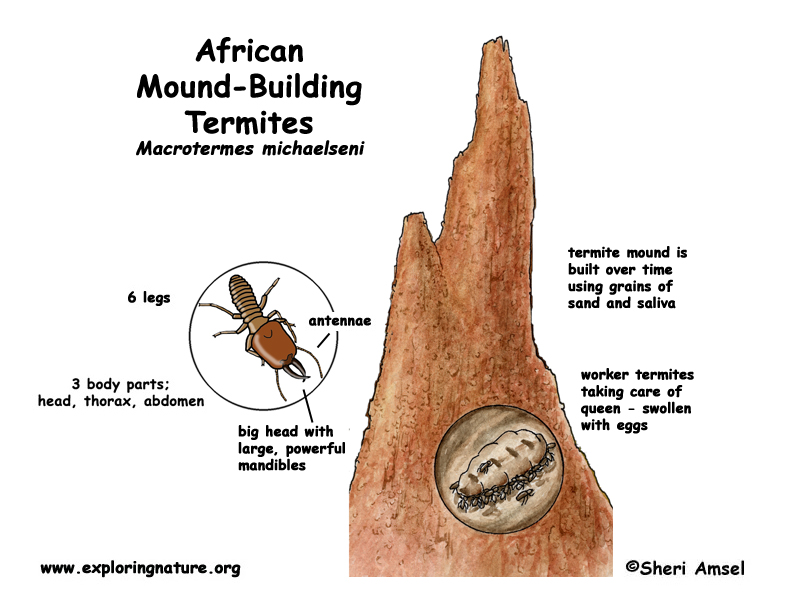

They are found in Africa.
They live in the rain forest and on the grasslands (savannah).
They are social insects living in a colony with many forms of termites doing different jobs. The workers are blind and have no wings. They feed and take care of the other termites, dig tunnels, find food and water, keep house taking care of the nest. The soldiers keep the colony safe from predators. The king's only job it to fertilize the eggs. The queen lays the eggs and is much bigger than the other termites.
The termites build huge nests that grow over time to giant mounds, some more than 10 feet tall.
They eat wood, bark, straw and anything cellulose. They have bacteria in their stomachs that help them digest the tough cellulose in their food.
The queen becomes swollen with eggs.
Domain: Eukarya
Kingdom: Animalia
Phylum: Arthropoda
Subphylum: Hexapoda
Class: Insecta
Order: Isoptera
Family: Termitidae
Genus: Macrotermes
Species: M. michaelseni
When you research information you must cite the reference. Citing for websites is different from citing from books, magazines and periodicals. The style of citing shown here is from the MLA Style Citations (Modern Language Association).
When citing a WEBSITE the general format is as follows.
Author Last Name, First Name(s). "Title: Subtitle of Part of Web Page, if appropriate." Title: Subtitle: Section of Page if appropriate. Sponsoring/Publishing Agency, If Given. Additional significant descriptive information. Date of Electronic Publication or other Date, such as Last Updated. Day Month Year of access < URL >.
Amsel, Sheri. "Termite (African Mound-building)" Exploring Nature Educational Resource ©2005-2024. December 14, 2024
< http://www.exploringnature.org/db/view/Termite-African-Mound-building >

